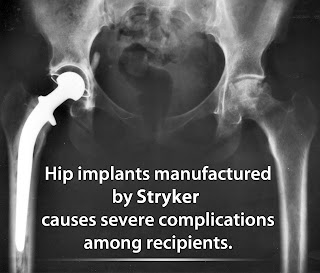One orthopedic device manufacturer that produces artificial hip systems has issued the latest Stryker hip replacement recall of implants having the modular-neck hip stem attachments causing critical side effects from component loosening indicating muscle pains from swollen soft tissues. Even way before until the present, several versions of Stryker hip systems are being concluded for a number of recall orders. The U.S Food and Drug Administration gave an approval to the recent model of Stryker metal-on-metal hip systems even with the dismissal of earlier versions.
All Rejuvenate Modular and ABG II Modular-Neck hip stems are included in the product recall. After-sales evaluation has indicated the possibility of corroding device and easy wear down which consequently made the company to voluntarily issue the device recall. The United States FDA verified the claims of critical side effects. The adjustable hip stem component included with the hip implant system will add device flexibility. The doctors can adjust the device depending on the patient’s physique. Stryker has promised the device to be durable from the frequent rubbing of its neck and stem attachments. Deciding for a hip replacement surgery should be fully evaluated by the patient, his or her family, and the physician. The physician should be able to recommend for orthopedic surgeons who can further evaluate if a hip replacement implant is really necessary.
Surgery specialist should take in to consideration several health aspects prior to the recommendation of an artificial hip implant. Even if the average groups who need hip replacements are within the ages of 60 to 80 years old, age is not considered as a factor compared to other previously reported side effects. As a matter of fact, several patients below the age of 60 are considering the hip replacements to be able to fully keep up the active way of life. Metallosis, tissue inflammation, and other related complications caused by the Stryker hip devices became the precursor of increasing legal cases for defective medical devices. Some allegations also presented serious heart and circulatory problems.
Most of the legal complaints being raised after the Stryker hip recall are saying that the company failed to provide enough details informing the patients about the possible side effects. Plaintiffs against Stryker hip implants said that they could not have preferred the hip device if enough warning signs were given.
The latest device recall involving modular neck hip stem metal-on-metal hip component is expected to gather increasing number of legal complaints against Stryker Orthopedics.
URL Reference: livestrong.com/article/207903-most-common-side-effects-after-hip-replacement-surgery/
